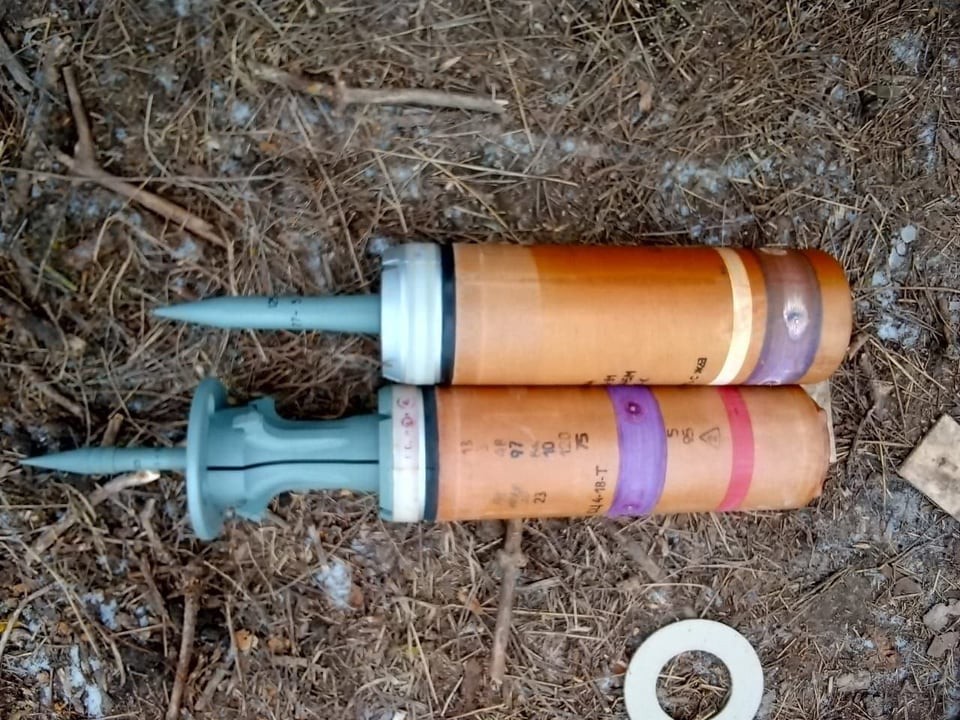Ammunition made with depleted uranium: Russia denounces what its own tanks use
The invasion of Ukraine is being a constant display of cynicism by the Kremlin, now also about tank ammunition.
The United Kingdom to supply DU ammunition to Ukraine
This Monday, at a written response Speaking in the British Parliament, Annabel Goldie, UK Deputy Defense Minister, said: "Alongside our granting of a squadron of Challenger 2 main battle tanks to Ukraine, we will be providing ammunition including armour piercing rounds which contain depleted uranium. Such rounds are highly effective in defeating modern tanks and armoured vehicles."

Putin hints that these munitions are nuclear weapons
The news began to circulate in the media and the next day, Vladimir Putin stated: "If all this happens, Russian will have to respond accordingly, given that the west collectively is already beginning to use weapons with a nuclear component."
Putin's words about nuclear weapons were a hoax, which has been followed by an announcement by Putin that he will station nuclear weapons in Belarus. Strategically this means little change, as Russia already had nuclear weapons in the Kaliningrad enclave, which borders Poland and Lithuania. Putin's statement is nothing more than another threat to try to intimidate the West, but the situation has not changed: the Russian dictator knows that a nuclear attack would receive an immediate response from NATO.

Depleted uranium munitions are NOT nuclear weapons.
For those unfamiliar with these issues, it should be noted that depleted uranium shells are NOT nuclear weapons. In nuclear weapons, enriched uranium and enriched plutonium are used, that is, more concentrated than in their natural state. Depleted uranium is less radioactive than natural uranium, but it is more dense. Its hardness makes it ideal for combat tank protections. For example, the US M1 Abrams have plates of a depleted uranium alloy in their Chobham armor, which offers them greater protection against enemy fire.
At the same time and due to its hardness, depleted uranium is also used in anti-armor ammunition, not only in tanks, but also in aircraft (the famous GAU-8 rotary cannon of the A-10 Thunderbolt II American attack aircraft carries 30mm depleted uranium shells) and on other military vehicles. These types of projectiles were used for the first time in the Gulf War (1991). It should be noted that depleted uranium projectiles are not prohibited by any international treaty, contrary to what happens with the cluster bombs and the white phosphorus bombs that Russia is using in its attacks against the Ukrainian civilian population.

Russia uses Svinets-2 ammunition with depleted uranium in its T-80BV tanks
Russia's hypocrisy is not limited to that. On December 20, 2018, the Russian state agency Tass stated: "Russia's T-80BV main battle tank has been upgraded to be capable of firing depleted uranium shells, the Defense Ministry said in the 'Russian Army Compared' newsletter published on Thursday." Tass noted that the Russian deplete uranium ammunition is the 3BM60 Svinets-2.
While the Svinets-1 ammunition, made with tungsten carbide, is capable of piercing 700-740 mm of homogeneous armor at a distance of 2 km, the Svinets-2 can pierce 800-830 mm of armor at the same distance. It should be noted that images of Svinets shells circulated a month ago- 2 used by the Russians in the Ukraine.

Tass noted that the information that one of the Russian shells has a depleted uranium core was confirmed to that agency by Russian military expert and editor-in-chief of the "Arsenal of the Fatherland" magazine Viktor Murakhovsky: "It has the alloy of depleted uranium and tungsten", he said. Tass then stressed that "the use of depleted uranium ammunition does not violate any international treaty."
Tass also noted that such ammunition "is stored outside the arsenals of military units of the Russian army and falls under the category of special stocks." The Russian agency did not then classify those shells as nuclear weapons nor as weapons with nuclear components, as Putin did when referring to the British projectiles.

The Russian agency also pointed out in that information that the US Army also has tank shells with depleted uranium cores. Specifically, he referred to the 120mm APFSDS M829A1 round, introduced in 1991. Currently, the US Army uses the M829A4 version of this ammunition.
---
Main photo: Reuters. Russian T-80BV tanks at a parade in Moscow.
|
Don't miss the news and content that interest you. Receive the free daily newsletter in your email: |
- Most read
- The brutal 'touch and go' of a Lufthansa Boeing 747 at Los Angeles Airport
- An American airman used a Flag of Spain to direct a B-1B Lancer bomber
- A Spanish pilot shows one of the C-295M of the 353 Special Operations Squadron
- The massive takeoff of more than half of the United States B-2 Spirit stealth bombers
- E-4B Nightwatch: this is the inside of the 'Doomsday Plane' of the US Air Force
- Eurofighter vs F-35: the opinions of professional pilots on these advanced fighters
- The firearms used by the Pontifical Swiss Guard, the smallest army in the world

 ES
ES







Opina sobre esta entrada: